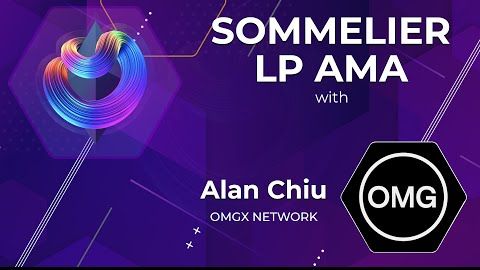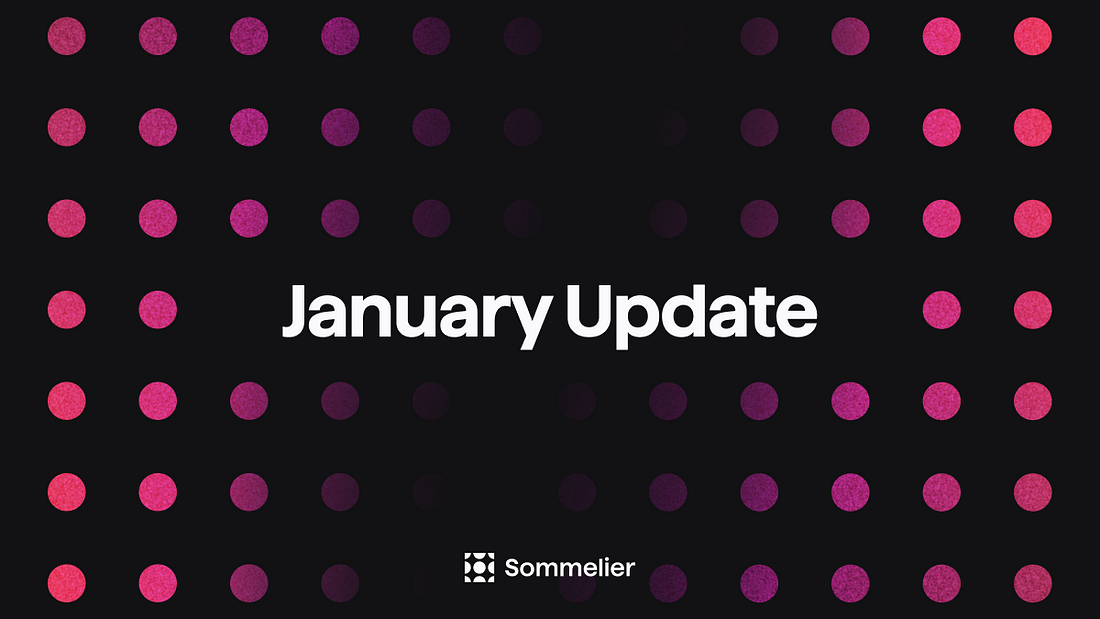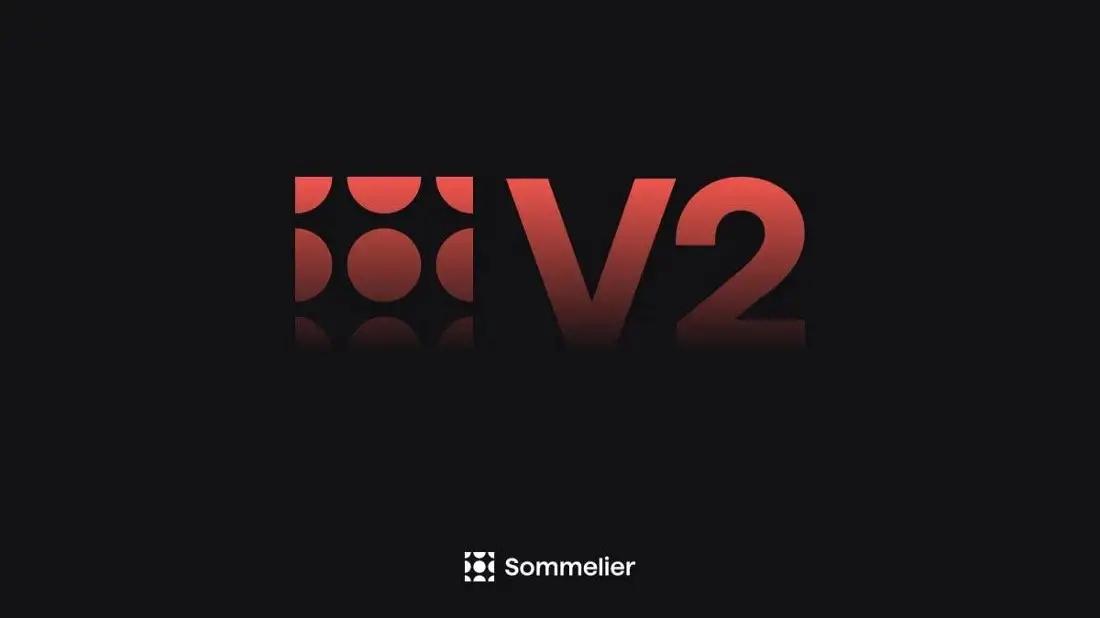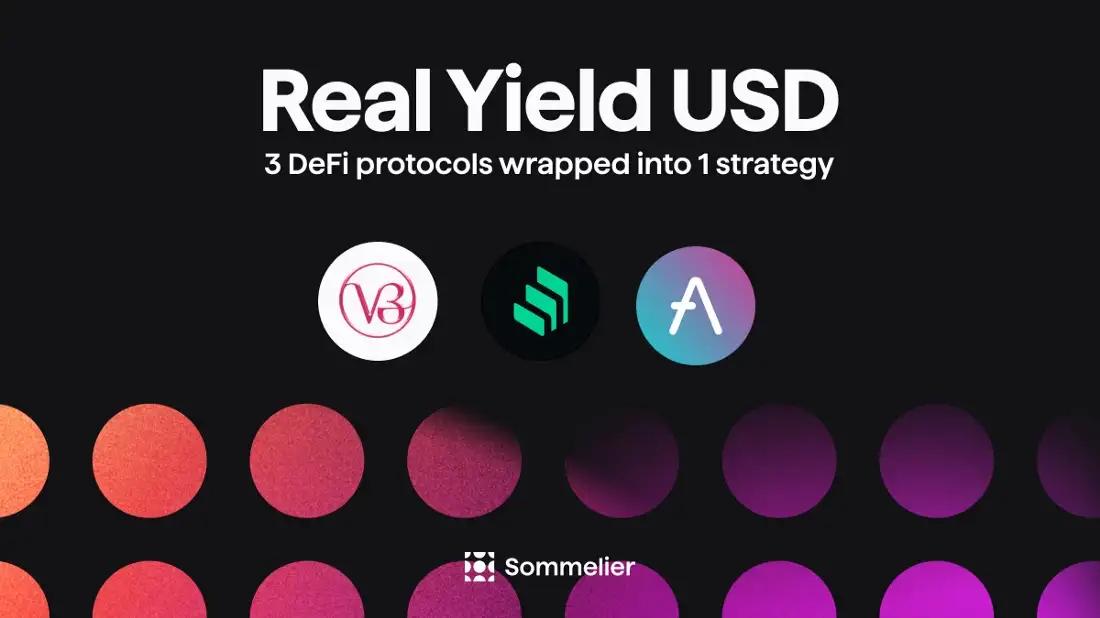Sommelier Liquidity AMA With Alan Chiu From OMGX Network
Enya.ai CEO, Alan Chiu, speaks with Sommelier Cofounder, Zaki Manian, about Scaling Ethereum with OMG Network, OMGX, Ethereum Layer 2s, and the roll-up future

Kicking off a recent Sommelier liquidity providers’ AMA, Sommelier cofounder, Zaki Manian, set the stage for discussion. “The context here is fairly complex,” he observed. “The OMG token has been around for a while. It’s gone through a lot of changes over the years. It’s a 2017 era crypto asset and there’s a new road map and a new vision.”
Then he invites his guest, Alan Chiu, to introduce himself and his new development projects:
“Hi everyone. I’m Alan Chiu. I’m the CEO of Enya.ai and since around February of this year Enya has become the core development partner of OMG. And, what’s going on with OMG, as Zaki mentioned, it’s been around for a few years as a project. OMG launched Plasma mainnet last year and the previous team had really tried to make Plasma sing and work really well for use cases like enterprise payments and central bank digital currencies, but the traction just didn’t then come to Plasma. And, towards the end of last year, OMG was acquired by Genesis Block Ventures and subsequently we started pondering with OMG to figure out, OK, what’s next?
“And, we felt that the original mission of OMG, to scale Ethereum, continues to be relevant if not more so with the rise of DeFi and NFT and so much demand coming to the Ethereum ecosystem. And, so we thought, let’s go back to our roots. Let’s go back to what OMG started in the first place. But, this time, let’s build a scaling solution that supports smart contracts, that actually serves the needs of developers and also does so in a way that maximizes community involvement, development involvement, and user involvement. And, so that’s what led us to creating OMGX, a whole new Layer 2 solution that’s a wholly separate network from OMG Plasma.”
What is OMGX?
First of all, OMGX is based on Optimism. Alan explains:
“We’ve been collaborating with the Optimism team to make this happen. We launched our test net on Rinkeby in May and we are working very hard towards launching mainnet as soon as possible.
“Now, in addition to building on Optimism, we added our own take on what this Layer 2 scaling solution looks like, what this Optimistic roll-up looks like. And one of the first additions that we implemented was our very own, liquidity-based, fast-access solution, which actually might be very interesting to liquidity providers out there. And, another addition that we are adding to this Optimistic roll-up, OMGX, is what we call extensible smart contracts, is the ability for smart contracts to invoke code that runs on web-scale infrastructure, like AWS Lamda endpoints and pull the results back into the smart contracts. And, this opens up the possibilities for smart contracts to offload more compute-intensive algorithms to AWS or other cloud infrastructure and not have to incur super high gas fees or sometimes even algorithms are impossible to be executed within a smart contract. And, this hybrid model starts bridging the world of dapps with the world of machine learning, secure computation and other more advanced computing.”
Zaki pauses the discussion to dig through a bunch of the cool ideas Alan just introduced that are probably completely new to people.
What is Optimism?
Alan explains: “Optimism is an Optimistic Rollup, which is one of the ways to scale Ethereum.”
“Yup,” Zaki agrees and adds:
“The basic idea is you publish the transactions on Ethereum, but you execute them on a separate layer, on a separate network. So that’s the basic idea of Optimistic Rollups. The Arbitron Optimistic Rollup has been generating a lot of excitement. Optimism is also a major player in space. Both offer sort of general smart contracts and Solidity support. These are the key pieces and probably this is the Ethereum Edition of DeFi Summer 2.0 Multichain Edition is the launch of all of these rollups and the launch of DeFi in all of these rollups.”
Building an instance of Optimism
Zaki sums up what Enya’s team is building:
“What you guys are building is an instance of Optimism. Maybe the idea is that there’s going to be one Arbitron and one Optimism. And those are going to be the two competing Layer 2s. What I think that you guys are doing, which is a really important demonstration, is that there’s going to be more than one instance. Optimism is going to have many flavors, and you guys are really innovating on another flavor of Optimism.”
Alan observes:
“Absolutely, and this is going to be a real benefit to developers because we are still in the very early days of scaling Ethereum. There are going to be many different design choices available to different teams that are scaling Ethereum, which means there are going to be different design choices available to developers as well.
“A monoculture, a singular way of scaling Ethereum, even within the realm of Optimistic Rollups, I think would be limiting from an innovation perspective, so we’re excited that there’s so much going on in the Layer 2 space. We’re happy to add our own flavors to it. And, also, we expect there will be other teams that jump into the fray and have their own take on what it means to scale Ethereum and optimize maybe for different design attributes. And, all this means is there will be a lot of choices for developers to choose from And, you don’t have to choose just one, you can be everywhere.”
The future is interoperable
Zaki predicts we will quickly find that all of these different instances are interoperable. He says:
“I don’t know how much you know about this, but my interactions with OMG and the project go back to 2017. Collaborated with them a lot. There were a lot of attempts to try and figure out how OMG and Cosmos would work together. But, in many ways I feel like your project, OMGX is almost the spiritual successor. And, it’s definitely like an intellectual successor, that like these are the directions that Cosmos has always wanted to explore, which is a multichain ecosystem interoperating.
“We can already see what’s unique about OMGX. One is just to begin with -- like you talked about some software features that I want to dig a little bit deeper into -- but you also have a token, which the first instance of Optimism, or like the first instance of Artitron, does not. What is going to be the relationship between the OMG asset and this network? Is there anything you guys are ready to talk about yet?”
Alan says: “That’s a very astute observation.”
News: Incentives!
Alan shares some news:
“The OMG and the OMG token is one of the most widely held tokens out there being held in almost 700,000 wallets. What we’re really trying to do here is more than just building software. What we’re creating is a community-driven Layer 2 solution. And the token will be critical to how network upgrades and how this network will be governed and operated going forward.
“We have already started working on our plans to transition OMG and the governance of OMGX into a more decentralized system. The specifics we’ll announce when the plans are fleshed out and when we’re ready. But the expectation is the token will be a key part in driving participation in the DAO that we’re creating. And, let’s be frank, marketing incentives also matter a lot in driving adoption.”
Zaki agrees and adds:
“We’ve seen what Matic and Polygon have been able to do with their incentives, right? And, I think that’s a perfect demonstration of the power of a token and the community building aspects of it to drive enthusiasm around new solutions. I think you guys are perfectly placed. It’s been a crazy journey for OMG over the last few years but it does seem like there’s a lot of strategic strength here. And, so that’s really exciting.”
Framing the new liquidity solution
Zaki sets the groundwork for Alan to talk a little bit about the liquidity solution his team’s working on. So, to structure the problem:
“The exit of assets from an Ethereum Layer 2 back to the Ethereum Layer 1 requires this window, where… The way Optimistic Rollups, what makes them Optimistic is that there is an opportunity to submit a fraud proof and have an invalid transaction, an invalid state rolled back. So let’s say in any instance of Optimism something terrible happens and a transaction breaks the protocol rules, steals a bunch of money, gets committed as a this is what we call an invalid state transition, or irregular state transition. And, so you need this window of opportunity to submit this fraud proof that proves that this state transition happened.In order to have this window of opportunity you have to wait. As a user when you want to move your assets from the ‘un-Optimism’ instance back to the Ethereum L1.
“And, while direct, rollup to rollup interop is probably something that will come, the primary way people will interoperate between them in the early days will be through the Ethereum L1. And, given this constraint you find yourself in this position of where liquidity can get locked up waiting for the opportunity to exit. So, how are you guys going to make life easier for liquidity providers?”
The liquidity solution details
Alan appreciates Zaki’s clear explanation and fills in some details:
“So, first of all, the mechanism you described will be available in OMGX. In addition we have set up liquidity pools on both Layer 1 and Layer 2, and when a user exits from OMGX back to Layer 1. They have the option of going the fast-exit route. And when they withdraw through that path what happens is the Layer 2 liquidity pools gets decremented and the Layer 1 liquidity pool gets incremented. And so that’s how they take the funds out.
“Now what that means is the liquidity providers are bearing the risk of a potential invalid transaction happening. And, in return for bearing that risk, the user withdrawing the funds will pay a convenience fee that will get shared amongst the liquidity providers. And, in order to retain necessary balances in these liquidity pools there’s going to be a corresponding swap-on mechanism where the liquidity pools will get rebalanced and replenished. And, we’re working on mechanisms to also provide incentives to attract liquidities to both sides and how these fees are going to be determined initially is going to be determined by our own team. But, over time we will turn these decisions over to the DAO, to the governance, and let the community decide what makes the most sense.”
Will Sommelier be part of the economic mechanism?
Zaki projects the possibilities going forward:.
“This is going to be very exciting. I think that one of the big race conditions in the design of blockchain protocols right now is an economic mechanism, like what you described. versus and so you know the whole thing is that you can be a liquidity provider into that pool at near-zero risk because anyone can validate the Optimism chain. And, if they see an invalid state transition they can pull their liquidity. So, the risk and -- in a fully rational world -- the fees associated with taking on that risk should be minimal. It’s just simply the risk-free cost of capital. It shouldn’t be that big a deal. On the other hand we have all of the folks building zero knowledge rollups and using validity proofs who don’t have this exit time and they’re using a cryptographic mechanism as zero knowledge proof to prove that their blocks are all valid. And, I think it’s going to be a really interesting race between these two systems.
“I think it’s really exciting that you guys are deploying a liquidity pool mechanism. And, yes,I think this is likely to become a very low-cost way for people to participate. And, I can see a thing, like Sommelier-managed liquidity pool into this exit pool, because the Sommelier validators, for instance, could offload the work of validating the OMGX chain and ensuring that the risks are actually there and taking action if an invalid block actually happens.”
Alan says: “We would love to see that happen.”
Zaki: I think this is the future of the multichain, of the inner chain. And it’s really exciting to see it all come to life. That’s fantastic. So, maybe you can tell us what’s your sense of the timing over the summer? Both Arbitron and Optimism’s first instance have been in gated mainnet deployment for probably almost a month now. What is your sense of how this timeline is going to unfold?”
About the timeline
Alan digs into predicting a summer timeline:
“That’s a great question. First of all, this stuff is hard. We’ve got some of the smartest people on the planet working on some of these problems for years and finally we’re getting very, very close to seeing these mainnets go live, but still it’s hard to predict schedules. There have been delays, no doubt about that. So, first of all we have a ton of respect for the Optimism and Arbitron teams. In terms of timing, I really don't want to jinx how quickly we can launch because it almost seems like every time a team announces a target date they miss it.So, I don’t want to jinx our team but what I can say is every day, every week when I see updates coming from our engineering team they’re making incredible progress.
“And you mentioned earlier this is almost like Ethereum DeFi Summer 2.0 because Layer 2s are coming out so, pardon the pun, I’m optimistic that we’ll be able to get something out during the summer, but I’ve been crossing my fingers for a long time. I’m almost straightening my fingers now. I’m just recognizing that we’re solving some really difficult engineering problems and the teams are working, but I don’t have a fixed timeline on that.”
Zaki will follow with interest the launch of one instance with a native asset and another without:
“Sommelier is an Enthereum-focused project, and we’re focused on Ethereum and its Layer 2s, but I still have my hands in Cosmos. And, I am something of a multichain maximalist in the sense that I have always believed that there would be many blockchains. And, I sort of am excited about this instance of DeFi Summer 2.0. Just because what we’ve learned from DeFi Summer 1.0, is that the launch of DeFi in most ecosystems definitely brings an increased level of activity, an increased level of community engagement, a lot more things to do with your assets. In Cosmos we’ve had the Osmosis chain launching, next week we have the Gravity decks on the Cosmos Hub launching. The Solana ecosystem is having a massive amount of DeFi stuff built on it and it’s interesting to me. What I think is utterly fascinating is that you have an instance that has a native asset and an instance that doesn’t have a native asset launching and we’re going to see how that battle plays out. If the Matic experience is any indication, having a native asset and the willingness to be aggressive is going to make all the difference in terms of community adoption.”
How many projects will be on OMGX when it launches?
Alan sets realistic expectations:
“We’ve been asked that question a lot because folks want to have a sense for how much traction we’re getting. We want to let the teams control when they announce. And, having spent enough time in my career in sales, you also don’t count your deals until the money is in the bank so to speak so I would only feel 100% confident the team is launching after they’ve launched.”
Zaki shares his battle experience with this:
“We are in the blockchain space. We are not financial capital constrained, really. We are human capital and just the time it takes to write software. Software is definitely a thing that I’m sure you’ve experienced, no matter how much money you have you can only make it go so fast. Engineering is hard, building safety-critical systems is hard but what I would say is I think traction tends to be overestimated in the space just because everything is so early and switching costs tend to be low. LIke switching ecosystems, switching Optimism chains is not going to be terribly expensive, which is one of the things that makes DeFi, I think, so unstoppable. Something can go wrong with so many chains, instances, but there’s always somewhere else to go. And, I think it’s difficult to fight a war against a multi-headed hydra like that.”
Alan agrees and observes:
“Capital is like water, it can so easily flow from one chain to another. And, I totally agree, I’m on the same page with you. And the way we look at the blockchain world, well, it’s absolutely going to be a multichain world with solutions like Summerly that makes it so much easier for DeFi users to benefit from a multichain world. So, this is all goodness for developers, for users, and I think sometimes also folks may overemphasize the number of projects on a particular network. I think what matters more is the number of quality projects that are going to be available on the network, not the quantity. Because what matters is ultimately how many people are using these protocols and how much liquidity is going to be attracted to the network. And, if you have 100 shitty projects it’s not nearly as good as having 10 high quality projects.”
Zaki notes:
“Absolutely. And, it takes an enormous amount of attention from the team onboarding those projects, helping them get spun up. And, you’ve got to manage resources. So, I think it’s really exciting. This has been fantastic, I’ve learned a lot. When I saw that OMG was building on top of Optimism, I thought it was quite surprising, but I also thought, quite good. And, I think that there is a lot to be excited about coming up and so thank you very much for your time.”
Alan appreciates the interchange and is ready to get back to work digging in. “Thank you for having me. I love your framing of us being the intellectual and spiritual successor of the original vision and can’t wait to make that real.”
More articles
© 2025 Somm by Bajanss OÜ –Maakri 36-50, Tallinn, Estonia 10145




